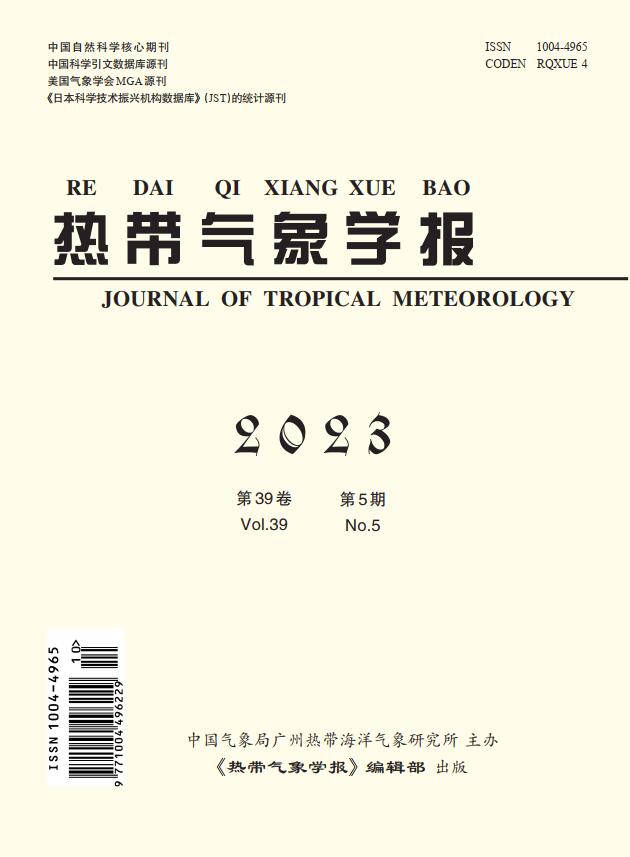Interannual Variation and Statistical Prediction of Summer Dry and Hot Days in South China from 1970 to 2018
IF 1.4
4区 地球科学
Q4 METEOROLOGY & ATMOSPHERIC SCIENCES
引用次数: 0
Abstract
: The frequent occurrence of dry and hot (DH) days in South China in summer has a negative impact on social development and human health. This study explored the variation characteristics of DH days and the possible reasons for this knotty problem. The findings revealed a notable increase in the number of DH days across most stations, indicating a significant upward trend. Additionally, DH events were observed to occur frequently. The number of DH days increased during 1970–1990, decreased from 1991 to 1997, and stayed stable after 1997. The key climate factors affecting the interannual variability of the number of DH days were the Indian Ocean Basin warming (IOBW) in spring and the East Asian Summer Monsoon (EASM). Compared with the negative phase of IOBW, in the positive phase of IOBW, 500 hPa and 850 hPa geopotential height enhanced, the West Pacific subtropical high strengthened and extended abnormally to the west, more solar radiation reached the surface, surface outgoing longwave radiation increased, and there was an anomalous anticyclone in eastern South China. The atmospheric circulation characteristics of the positive and negative phases of ESAM were opposite to those of IOBW, and the abnormal circulation of the positive (negative) phases of ESAM was unfavorable (favorable) for the increase in the number of DH days. A long-term prediction model for the number of summer DH days was established using multiple linear regression, incorporating the key climate factors. The correlation coefficient between the observed and predicted number of DH days was 0.65, and the root-mean-square error was 2.8. In addition, independent forecasts for 2019 showed a deviation of just 1 day. The results of the independent recovery test confirmed the stability of the model, providing evidence that climatic factors did have an impact on DH days in South China.1970-2018年中国南方夏季干热日的年际变化与统计预测
:华南地区夏季干热(DH)日频发,对社会发展和人类健康造成了负面影响。本研究探讨了干热日的变化特征以及造成这一棘手问题的可能原因。研究结果表明,大部分站点的干旱日数明显增加,呈显著上升趋势。此外,还观察到 DH 事件频繁发生。DH 日数在 1970-1990 年间增加,1991-1997 年间减少,1997 年后保持稳定。影响 DH 日数年际变化的主要气候因素是春季的印度洋海盆增温(IOBW)和东亚夏季季候风(EASM)。与印度洋海盆增温负相位相比,印度洋海盆增温正相位时,500 hPa和850 hPa位势高度增高,西太平洋副热带高压增强并异常向西延伸,到达地表的太阳辐射增多,地表出射长波辐射增加,华南东部出现异常反气旋。ESAM正负相的大气环流特征与IOBW相反,ESAM正(负)相的异常环流对DH日数的增加不利(有利)。结合主要气候因子,利用多元线性回归建立了夏季 DH 日数的长期预测模型。观测和预测的除湿日数之间的相关系数为 0.65,均方根误差为 2.8。此外,2019 年的独立预测显示偏差仅为 1 天。独立恢复测试的结果证实了模型的稳定性,证明气候因素确实对华南地区的 DH 天数有影响。
本文章由计算机程序翻译,如有差异,请以英文原文为准。
求助全文
约1分钟内获得全文
求助全文
来源期刊

热带气象学报
METEOROLOGY & ATMOSPHERIC SCIENCES-
CiteScore
1.80
自引率
8.30%
发文量
2793
审稿时长
6-12 weeks
期刊介绍:
Information not localized
 求助内容:
求助内容: 应助结果提醒方式:
应助结果提醒方式:


